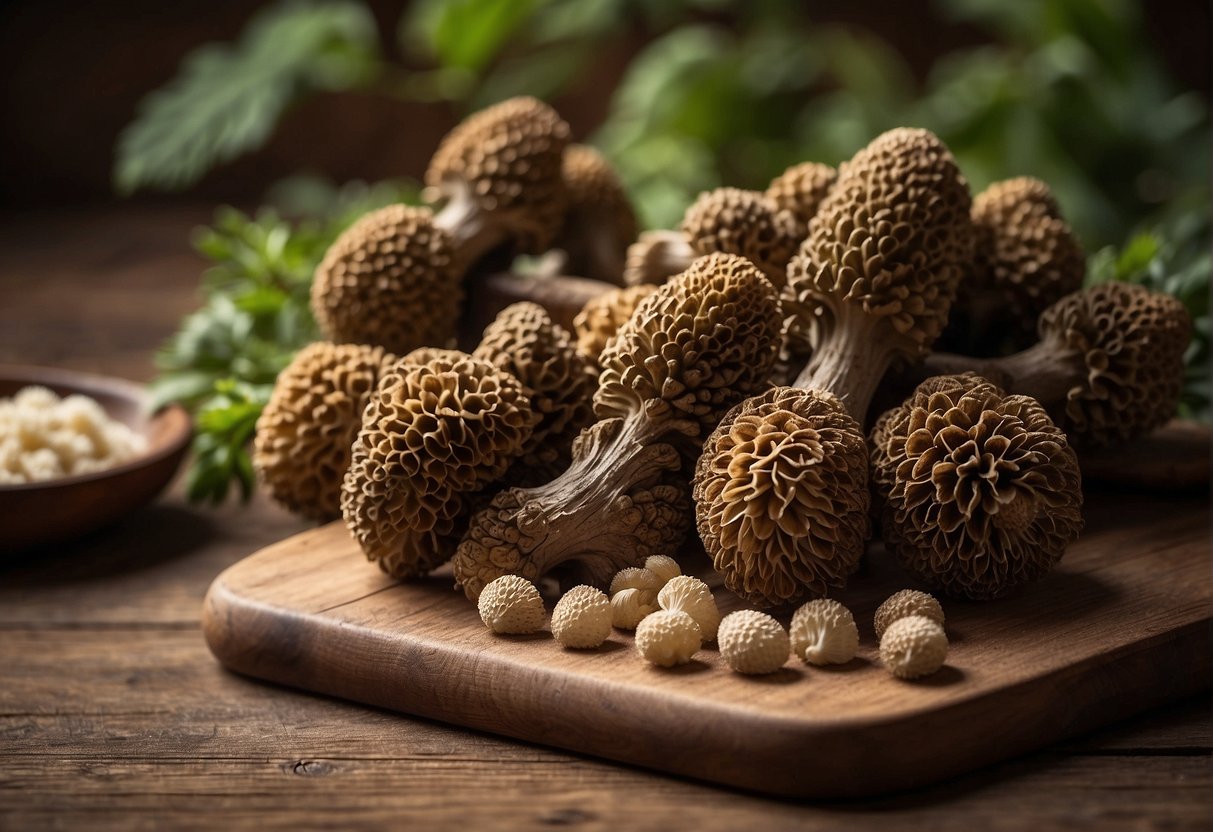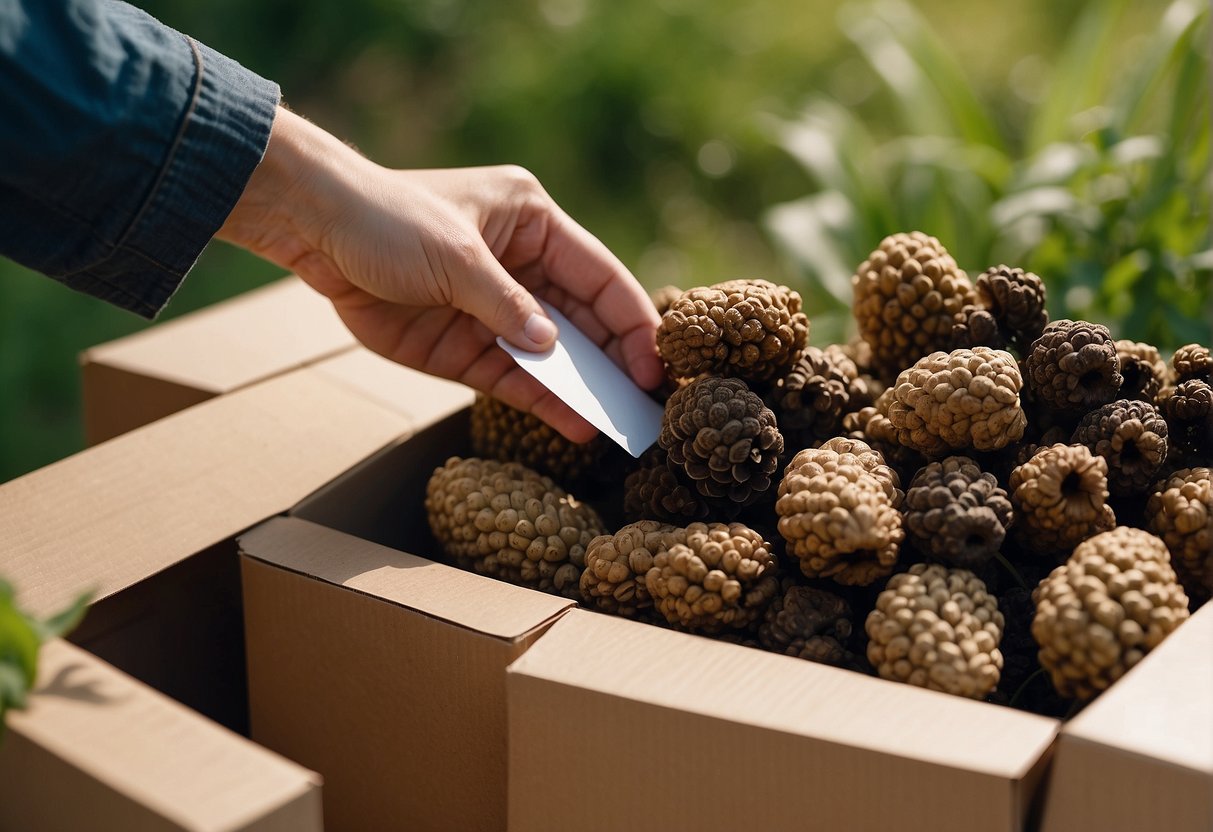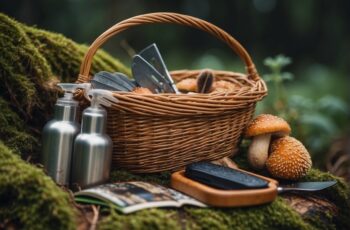As spring unfurls its green canopy across the forests and fields, an exceptional treasure begins to pepper the woodland floor—the elusive and highly prized morel mushroom. These fungal delights are not only a sought-after delicacy for their nutty and earthy flavors but also represent a triumphant find for foragers and outdoors enthusiasts alike. If you appreciate the thrill of the hunt but time or terrain are not on your side, worry not—you can still enjoy the unique taste of these springtime gems as fresh morels are available for sale.

Navigating the world of morel mushrooms could be quite the adventure, and understanding when to seize the opportunity is key. The fresh morel season is fleeting, typically sprouting from late March through May, depending on your region’s climate. So when the soil warms and the trees bud, it’s time to turn your attention to retailers who offer fresh morels. These mushrooms are not just a gourmet ingredient but a nod to the changing seasons, a time-honored tradition that enhances your springtime dishes with a distinctive, forest-fresh flavor.
Unlike their cultivated cousins, fresh morels bring to your table the essence of the wild spaces where they thrive. Whether sautéed with garlic for a simple yet elegant side dish or incorporated into more elaborate culinary creations, the addition of these mushrooms elevates any meal. Now is the perfect moment to indulge in the seasonal delight of fresh morel mushrooms, available for your culinary explorations, brought from the shaded forest floor to the comfort of your kitchen.
Identifying Quality Fresh Morels
When searching for fresh morels to purchase, it’s important to recognize the physical traits of prime quality specimens and understand the different types you might encounter.
Characteristics of Premium Morels
Texture and Freshness: Fresh morels should feel slightly spongy to the touch, yet firm, with no signs of mushiness. The presence of a subtle, earthy aroma indicates freshness, as older morels tend to lose their scent. Avoid specimens that appear shriveled or dried out, as this suggests they’re past their prime.
Color and Appearance: Look for vibrant, clean, and visually intact caps. Depending on their type, fresh morels can range in color from the honey-combed tan of blonde morels to the darker hues of grey or black morels. Make sure there’s no evidence of decay, such as dark spots or an overly slimy texture.
Varieties of Edible Morels
Black Morels (Morchella elata): Recognizable by their conical shape and dark brown to black ridges, these morels typically herald the start of the foraging season. They are often found in wooded areas, especially those that have recently burned.
Blonde Morels (Morchella esculenta): Also known as yellow or white morels, these feature lighter, yellowish-brown caps and are commonly discovered under deciduous trees. Valued for their flavor, they typically appear after black morels and can be found in both wild and organic conditions.
Remember, whether you stumble upon wild morels while hiking or acquire them through reliable sellers, ensuring you’re getting the highest quality fresh mushroom is essential for the best culinary experience.
Purchasing and Shipping Morels

Selecting and receiving fresh morels right at your doorstep has never been easier. When you order online, you can expect top-quality mushrooms sourced mainly from the verdant forests of the Pacific Northwest, a product of the USA, delivered with care to maintain freshness.
How to Order Fresh Morels Online
To bring the wilderness to your kitchen, navigate to trusted websites like Oregon Mushrooms which offers a variety of morels. You can place your order with ease; just choose the quantity and type of morels you’re after. Here’s your checklist:
- Find a reputable seller: Freshness is paramount, so select sellers that offer a good range of freshly picked morels.
- Check availability: Morels are seasonal, typically available from April till August.
- Place your order: Once you’ve chosen your morels, add them to your cart and proceed to checkout.
Remember that supply can depend on the foraging success of the season, so act swiftly when they’re in stock.
Ensuring Freshness During Delivery
When you order morels, your fungi friends are usually shipped within 24 hours to guarantee quality. Look for sellers like Morelmasters who make this promise. To ensure that your morels arrive in prime condition, consider the following:
- Expedited Shipping: Opt for the fastest shipping method to shorten transit times.
- Packaging: Quality sellers ship morels in breathable packaging to keep them fresh.
- Upon Arrival: Refrigerate your morels immediately after delivery to preserve their earthy goodness.
Receiving morels in excellent condition is your right as a consumer. Sellers aim to deliver this experience, affirming you’ve got nothing but the finest nature has to offer, just as if you’d foraged them yourself!
Storing and Preserving Morels
When you’re lucky enough to find fresh morels for sale, knowing how to store and preserve them will ensure you can enjoy their distinctive flavor year-round. By following a few key tips, you can keep your morels tasting as fresh as the day you bought them.
Tips for Refrigerating Morels
To maintain the freshness of morels in the refrigerator, it’s imperative that you store them properly. Morels should be kept in a breathable container such as a paper bag to allow air circulation; moisture from plastic can lead to spoilage. Ideally, you should consume your refrigerated morels within a few days, as the cool environment slows down decay but does not halt it completely.
- Storage Duration: Up to one week for optimal freshness.
- Container Preference: Paper bag or mesh bag.
- Humidity Control: Check daily for any signs of moisture accumulation.
Drying and Freezing Morels
To enjoy morels outside their short natural season, drying and freezing are your go-to methods. For drying, halve your morels lengthwise and arrange them on a baking sheet or a dehydrator tray. Dehydrate at 135°F until completely dry, which typically takes six to eight hours. Store the dried morel mushrooms in an airtight container in a cool, dark place, and they can last for up to a year.
Freezing morels is another excellent preservation strategy. Begin by thoroughly cleaning and halving the mushrooms. Then, flash freeze them on a cookie sheet before transferring to a zip-lock bag. This way, your morels can be frozen for up to six months without losing much texture or flavor. When you’re ready to use them, cook from a frozen state without thawing to maintain the best texture.
-
Drying Instructions:
- Halve and arrange morels on baking sheet.
- Set dehydrator to 135°F.
- Dry for 6-8 hours.
- Store in an airtight container.
-
Freezing Method:
- Clean and halve morels.
- Arrange on a cookie sheet and flash freeze.
- Transfer to a freezer-safe zip-lock bag.
Remember, the effort you put into preserving your morels will pay off when you’re savoring their unique taste even in the off-season.
Cooking With Morels
Fresh morels are a delight for any outdoor enthusiast looking to bring the essence of the wilderness into their kitchen. Their earthy flavor can uplift various dishes, from simple sautés to intricate sauces.
Recipes for Morel Mushrooms
When preparing morels, their unique taste is best showcased in a simple sauté with butter and garlic, allowing the mushrooms’ subtle flavors to stand out. For a more indulgent approach, try incorporating them into a cream sauce; their porous structure absorbs and enhances the creamy texture superbly. Here’s a quick recipe to get you started:
- Clean your morels thoroughly to remove any debris.
- Melt a generous knob of butter in a skillet over medium-high heat.
- Add minced garlic and sauté until fragrant.
- Toss in your morels and cook until they’re golden brown and slightly crispy on the outside.
- Finish with a splash of white wine and let it reduce for a bold twist.
- Serve atop a juicy steak or fold into fresh pasta.
Morels also make a wonderful addition to stews, where their meaty texture can become the standout feature of your dish. Layered in with root vegetables and a hearty broth, morels contribute significantly to the robust, earthy aroma that defines a good stew.
Pairing Morels With Wines and Foods
Selecting the right wine to accompany a dish with morels is crucial for enhancing your dining experience. Opt for a full-bodied white wine, such as Chardonnay, to complement the rich, nutty flavor profile of morels. The creamy and buttery notes in the wine will harmoniously underline the mushroom’s earthiness.
For food pairings, consider the versatile nature of morels. They are exquisite when combined with other ingredients that don’t overpower their subtle yet distinct flavor. You might enjoy morels with:
- Grilled meats: The smokiness from grilling highlights the morels’ natural earthiness.
- Spring vegetables: Fresh peas or asparagus can add a pop of sweetness and texture.
- Risotto: A creamy risotto provides a beautiful canvas for the mushrooms’ flavors to shine.
Remember, the key is to let the morels be the hero of your dish. So, go ahead, experiment with confidence, and savor the taste of the outdoors in every bite.


